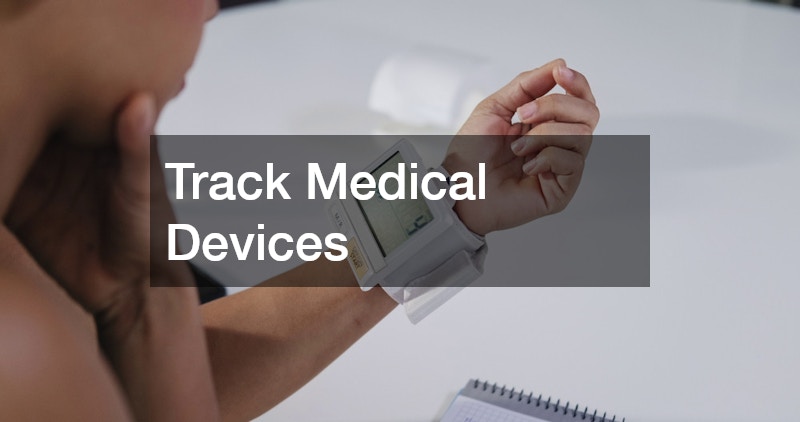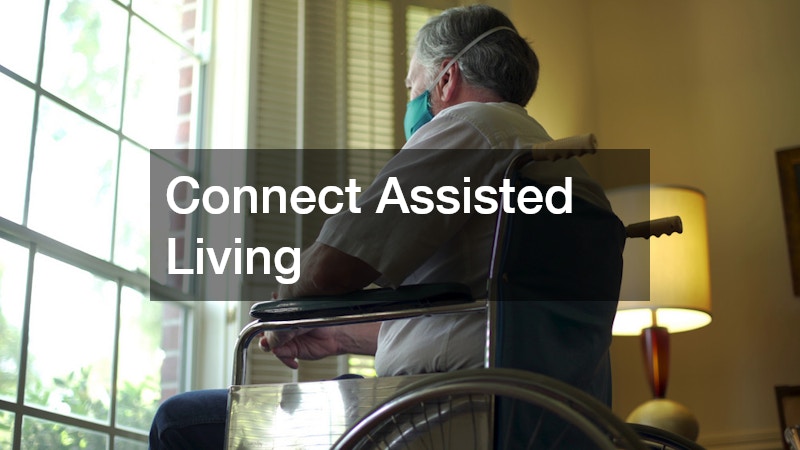In today’s complex healthcare landscape, consumer safety depends on seamless collaboration between doctors and companies. Patients no longer receive care in isolation—emergency response, home care, medical device management, and billing are all influenced by businesses that support healthcare delivery. When doctors and companies work together, they create safer, more reliable systems that reduce errors, improve outcomes, and increase patient trust. Structuring strategies that connect professionals, technology, and community resources ensures that every stage of care—from diagnosis to treatment and follow-up—is optimized for safety.
Emergency hospitals, medical device providers, billing firms, home care agencies, and educational programs all play crucial roles in patient well-being. By fostering these collaborations, doctors can implement coordinated approaches that prevent mistakes, accelerate treatment, and streamline operations. A wheelchair ramp company and a local assisted living community, for instance, enhance accessibility and reduce physical risks, while partnerships with ADHD doctors, eye specialists, and Lyme disease treatment providers ensure accurate, timely care for specialized conditions. These collaborations strengthen the healthcare system overall, demonstrating that building strategies with both medical and business partners directly protects consumers.
Moreover, collaboration extends beyond immediate care. Preventive measures, early diagnosis, and proactive monitoring all require combined efforts from medical professionals and business partners. Companies that provide innovative medical technologies, digital health platforms, and educational programs enable doctors to anticipate risks before they escalate. Creating strategies that integrate these resources with clinical practice empowers healthcare providers to deliver more comprehensive, proactive care. Ultimately, collaboration is more than operational efficiency; it is central to patient safety and the long-term sustainability of healthcare systems.
Improve ER Coordination
Efficient emergency hospital operations are critical for patient safety. When doctors collaborate closely with hospital administration and support companies, they can monitor real-time patient flow, manage resources effectively, and ensure that critical cases receive immediate attention. Structuring strategies that coordinate staff scheduling, emergency protocols, and supply management reduces wait times, prevents mistakes, and enhances overall hospital efficiency. By partnering with technology providers, hospitals can track bed availability, critical supplies, and staff deployment, creating a responsive system that safeguards patients.
In addition, predictive analytics and data-driven dashboards allow doctors to anticipate peak hours and potential emergency surges. Building strategies that combine historical patient data, community health trends, and staff availability enables hospitals to optimize workflows and reduce patient risk. Collaboration with companies that provide medical equipment or emergency support services ensures critical resources are always accessible. This proactive approach not only saves lives but also enhances the hospital’s capacity to respond to disasters and public health crises, demonstrating the profound impact of coordinated care on consumer safety.
Track Medical Devices

Medical device inventory tracking software is crucial for preventing errors and maintaining safe clinical environments. Doctors relying on accurate device management benefit from collaborating with software providers and equipment suppliers. Creating strategies that integrate inventory monitoring, maintenance schedules, and usage reporting allows hospitals and clinics to anticipate shortages or equipment failures before they compromise care. These coordinated systems not only protect patients but also improve workflow efficiency and reduce operational stress on medical staff.
Expanding on this, real-time alerts from tracking software can notify doctors immediately when a device requires calibration or replacement, reducing the risk of malfunction during procedures. Structuring strategies that include automated notifications, supplier coordination, and staff training ensures devices are always functional and compliant with safety standards. Hospitals leveraging such collaborations can also analyze device usage patterns to predict future demand and allocate resources efficiently. This proactive management creates a safer environment for patients while streamlining operations, highlighting the essential role of partnerships between doctors and technology companies.
Support Local Programs
Local associate degree programs supply healthcare institutions with skilled professionals who understand modern clinical practices and patient safety standards. Doctors collaborating with these programs can provide guidance on curriculum development, clinical rotations, and specialized training opportunities, ensuring that graduates enter the workforce with relevant, practical experience. Building strategies that connect educators, hospitals, and practicing doctors creates pipelines for highly competent staff, reducing mistakes and improving care quality across healthcare settings. By engaging in these partnerships, healthcare providers can shape a workforce that is not only technically proficient but also prepared to meet evolving patient safety requirements and respond effectively in high-pressure clinical environments.
Moreover, such collaborations foster ongoing professional development and continuous learning. Doctors mentoring students or providing guest lectures help integrate real-world insights into academic programs, exposing students to current protocols, emerging technologies, and patient care challenges. Creating strategies that pair classroom instruction with hands-on clinical exposure strengthens critical thinking, problem-solving, and practical skills, ensuring that graduates can make informed, safe decisions in complex healthcare scenarios. Hospitals benefit from a steady influx of well-prepared professionals capable of implementing safety protocols, managing patient care efficiently, and adapting quickly to new medical technologies or treatment approaches.
These partnerships also promote innovation within healthcare education. By working together, doctors and educational institutions can design simulation labs, interdisciplinary workshops, and specialized training modules that mirror real-world hospital environments. Building strategies that integrate technology, faculty expertise, and healthcare industry standards allows students to practice clinical procedures, refine patient communication, and develop teamwork skills before entering professional settings. Additionally, ongoing collaboration can help identify emerging workforce needs, such as training in telemedicine, infection control, or electronic health record systems, ensuring that graduates are prepared for the demands of modern healthcare.
By investing in local associate degree programs, doctors, hospitals, and supporting companies collectively reinforce consumer safety, elevate the quality of patient care, and address workforce shortages. These collaborations create a sustainable cycle in which skilled professionals continuously enter the healthcare system, bringing both competence and confidence. Structuring strategies that connect academic programs with clinical practice not only prepare students for immediate success but also cultivate a culture of lifelong learning, adaptability, and patient-centered care—ultimately strengthening healthcare delivery and safeguarding communities.
Enhance Lyme Care

Lyme disease treatment requires precise diagnosis, effective therapy, and ongoing monitoring, making collaboration between doctors and diagnostic or pharmaceutical companies essential. Doctors working with testing labs and medication providers can standardize care protocols, improve treatment accuracy, and reduce the risk of misdiagnosis. Building strategies that integrate research, patient education, and treatment delivery ensures that patients receive timely, effective care, reducing complications and supporting long-term health.
In practical terms, doctors can collaborate with pharmaceutical companies to access the latest antibiotics or treatment innovations while coordinating with diagnostic labs for faster test results. Structuring strategies that connect patient tracking systems, lab results, and treatment adherence monitoring allows healthcare teams to respond quickly to changes in condition. This seamless integration ensures that patients experience fewer delays, improved outcomes, and safer treatment experiences, reinforcing the importance of collaborative approaches to specialized care.
Integrate Home Care
Integrating in home care providers into treatment plans enhances patient safety and continuity of care. Doctors coordinating with home care agencies ensure proper medication management, regular monitoring, and timely intervention for at-risk or recovering patients. Building strategies that link digital health records, care schedules, and communication channels between doctors and home care providers reduces hospital readmissions and improves patient outcomes.
Patients recovering from surgery or managing chronic conditions benefit from a system where doctors, home care providers, and family members remain connected. Developing strategies that incorporate wearable health monitors, telemedicine consultations, and remote check-ins allows doctors to respond promptly to emergencies. By ensuring constant oversight and coordinated care, these partnerships provide a safer, more supportive environment for patients outside traditional clinical settings, reinforcing trust and promoting long-term wellness.
Streamline Billing

Professional medical billing companies enhance patient safety by reducing errors that can disrupt treatment access. Doctors collaborating with billing firms can verify insurance coverage, ensure accurate documentation, and prevent delays caused by administrative mistakes. Building strategies that integrate billing processes with clinical workflows minimizes errors, maintains compliance, and allows medical staff to focus on care delivery.
Furthermore, automated billing systems connected to electronic health records allow doctors to track patient accounts while maintaining treatment schedules. Structuring strategies that include regular audits, staff training, and real-time monitoring prevents costly mistakes and improves operational transparency. Efficient billing collaboration reduces administrative burdens, ensures patients receive care without interruption, and enhances overall healthcare system reliability.
Ensure Ramp Safety
Wheelchair ramp companies contribute to accessibility and physical safety in healthcare and residential settings. Doctors collaborating with these companies can advise on proper design, installation, and compliance with ADA standards. Developing strategies that integrate medical expertise, construction planning, and maintenance schedules ensures that ramps remain safe, functional, and reliable for patients with mobility challenges.
Additionally, doctors can provide insights into patient mobility needs, allowing ramp companies to customize designs for maximum safety. Building strategies that incorporate patient feedback, routine inspections, and material durability testing prevent accidents and injuries. By ensuring accessibility through collaborative planning, healthcare providers and ramp companies enhance independence, reduce fall risk, and create inclusive, secure environments for all patients.
Connect Assisted Living

Local assisted living communities rely on partnerships with doctors to provide safe, effective care for residents. Physicians collaborating with assisted living staff can monitor chronic conditions, coordinate medications, and provide timely interventions. Developing strategies that integrate electronic health records, routine check-ins, and on-site staff training creates responsive care environments that protect residents and reduce hospitalizations.
Expanded collaboration allows doctors to tailor care plans to individual needs, coordinate with physical therapists, and ensure residents maintain mobility and cognitive health. Creating strategies that include telehealth consultations, emergency protocols, and ongoing staff education ensures that residents receive timely interventions and personalized care. This comprehensive approach strengthens resident safety, reduces stress on families, and fosters high-quality outcomes within assisted living communities.
Coordinate ADHD Care
Managing ADHD requires collaboration between doctors, families, and educational or therapeutic providers. Partnering with add adhd doctors ensures accurate diagnoses, consistent treatment plans, and coordinated behavioral or medication therapies. Building strategies that link schools, families, and healthcare teams improve patient adherence, reduce risks of untreated symptoms, and enhance overall quality of care.
By integrating digital monitoring tools, regular consultations, and communication channels, doctors can track progress and adjust interventions proactively. Developing strategies that involve parent training, school accommodations, and therapy coordination ensures a consistent, safe approach to ADHD management. Collaborative care empowers patients, supports long-term development, and reinforces safety in academic and home environments.
Partner with Eye Docs
Vision care benefits significantly from collaboration between doctors and local eye doctors. Routine screenings, early detection of eye conditions, and timely interventions protect patients from vision loss and related complications. Developing strategies that integrate primary care with specialized eye care streamlines referrals, ensures follow-up, and provides a comprehensive approach to patient safety.
Doctors sharing diagnostic data and treatment plans with eye specialists can coordinate corrective procedures, monitoring schedules, and preventive strategies. Building strategies that incorporate patient reminders, digital records, and shared care plans reduces delays and improves treatment adherence. This partnership ensures that patients receive consistent, high-quality eye care while safeguarding overall health and enhancing quality of life.
Collaboration between doctors and companies is essential for consumer safety in healthcare. Across emergency hospitals, medical device inventory tracking software, local associate degree programs, Lyme disease treatment, in home care providers, professional medical billing, wheelchair ramp companies, local assisted living communities, add adhd doctors, and local eye doctors, partnerships improve patient outcomes, reduce risk, and strengthen operational efficiency. By building strategies that connect healthcare providers, technology, and community resources, doctors can create safer, more reliable care environments that protect patients at every stage.
Effective emergency coordination, accurate device tracking, and streamlined billing prevent delays and errors that could compromise treatment. Educational partnerships and home care integration prepare the workforce and extend patient support beyond traditional settings. Accessibility improvements through ramps and assisted living connections enhance physical safety for vulnerable populations. Meanwhile, specialized care for ADHD, Lyme disease, and vision issues benefits from precise, coordinated interventions. Developing strategies in these areas establishes comprehensive systems that anticipate challenges, prevent errors, and foster trust among patients and their families.
Ultimately, why collaboration between doctors and companies matters for consumer safety is evident across all aspects of healthcare delivery. By combining clinical expertise with business and community resources, doctors create resilient systems capable of responding to emergencies, chronic conditions, and evolving healthcare needs. Building strategies that foster these partnerships ensures timely, reliable, and effective care for every patient, reinforcing trust, improving outcomes, and supporting healthier communities overall.

